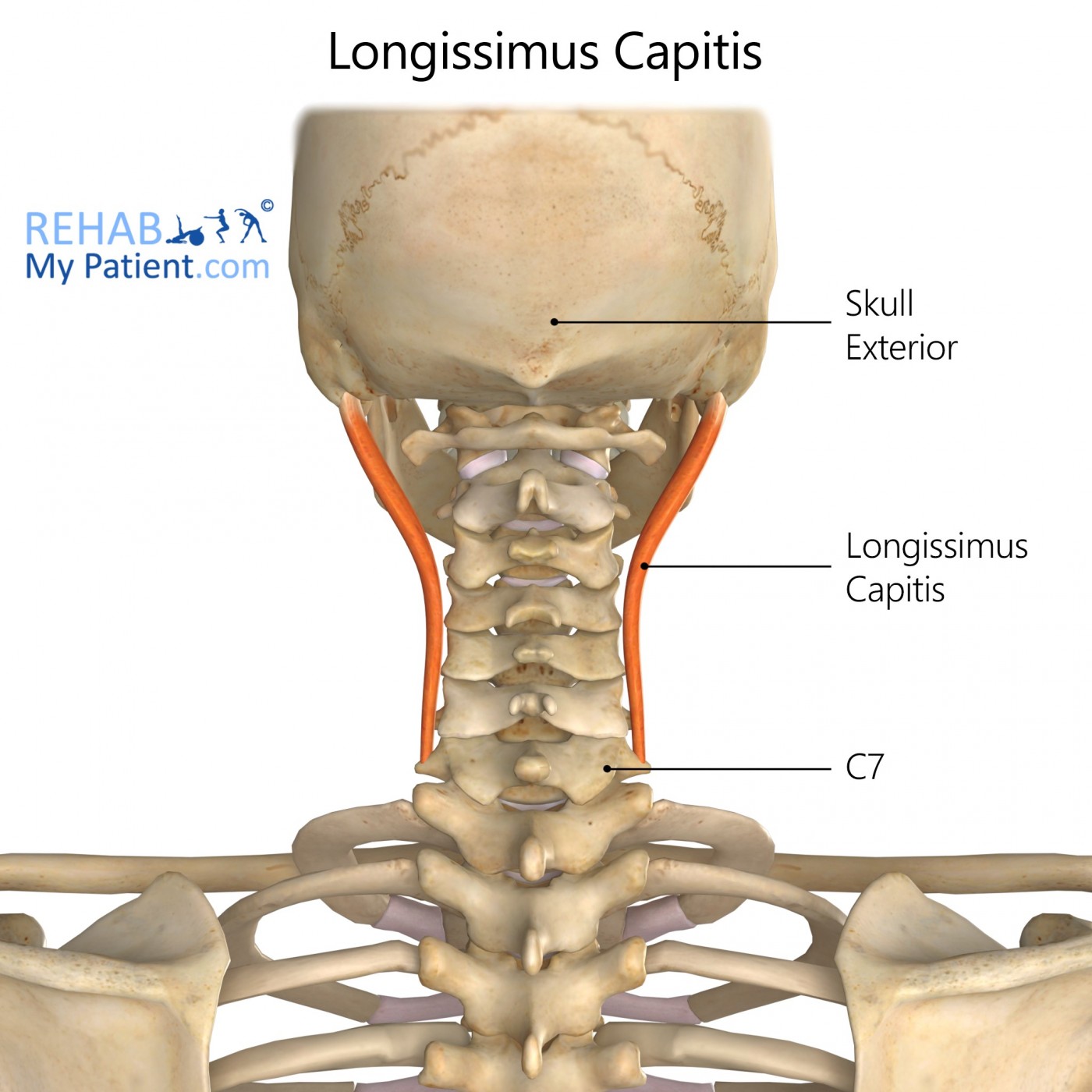Longissimus Capitis
Opublikowano dnia 27th Jul 2020 / Opublikowano w: Szyja

General information
Longissimus capitis is the part of the longest muscle of the neck, which serves to rotate the head from side to side and extend the head.
Literal meaning
The longest [muscle] of the head.
Interesting information
Longissimus capitis is one of nine erector spinae skeletal muscles. Erector spinae muscles compose the “core” of the body by working together to support the abdominals and the torso.
Mechanical neck pain caused by joint dysfunction affects several neck and back muscles, including the longissimus capitis. Muscles often tighten up, but sometimes they become very loose. The changes in the muscles put more stress on the joints and cause the issue to worsen over time. Headaches may occur with this syndrome, and pain can spread throughout the body.
Cervical dystonia, or spasmodic torticollis, is a painful syndrome that affects several cervical muscles, including the longissimus capitis. Symptoms include involuntary jerking movements of the head side to side or front to back. The cause of this disease has yet to be determined, but some hypotheses are head/neck injury or the use of anti-psychotics. One treatment available is the injection of the toxin botulinum, but many who suffer still do not receive relief. There is currently no cure.
Origin
Transverse processes T1-5; articular processes of C4 or C5-7.
Insertion
Posterior of the mastoid process of the temporal bone.
Function
Extends or hyperextends the head; bilaterally.
Laterally flexes and rotates head to the same side: unilateral.
Nerve supply
Dorsal rami of spinal nerves.
Blood supply
Muscular branches of the occipital artery from the external carotid artery.

Relevant research
Cervical dystonia has been treated with botulinum toxin for approximately twenty-five years. Placements of toxin injections are crucial to proper treatment. Injections should occur at the appropriate dystonic muscles which are determined by the nature of the head movements. It is just as important to ensure unnecessary muscles are not treated, as this could alter the course of the head movements and possibly worsen the condition.
Reichel, Gerhard. (2011). “Cervical dystonia: A new phenomenological classification for botulinum toxin therapy”. Basal Ganglia. 5-12.
Longissimus capitis exercises
Front and back isometric neck exercise
Stand with feet shoulder-width apart. Place both hands on forehead and gently push forward on the head, slowly increasing the tension. Prevent head movement by using the neck muscles. Once desired amount of pressure is reached, hold for 20-30 seconds. Repeat this procedure with hands placed behind the head with interlocking fingers. Carry out this exercise ten times twice a week.


Chin to chest stretch
Sit on the floor making sure to maintain good posture. Place hands behind the head and interlock fingers, make sure elbows face straight ahead instead of to the sides. Gradually pull head toward the chest and hold for 20-30 seconds. Remove hand placement and resume normal position with head. Slowly look up toward the ceiling or sky and hold position for 20-30 seconds. Repeat this procedure ten times daily.


Side neck stretch
Stand with feet shoulder-width apart. With relaxed shoulders, slowly tilt head toward the shoulder. Hold in place for 20-30 seconds. Repeat on the other side. Perform this stretch ten times daily.

Zapisać się
Zarejestruj się już teraz, aby skorzystać z bezpłatnego okresu próbnego!
Zacznij korzystać z Rehab My Patient już dziś i zrewolucjonizuj proces przepisywania ćwiczeń, aby zapewnić sobie skuteczną rehabilitację.
Rozpocznij 14-dniowy bezpłatny okres próbny